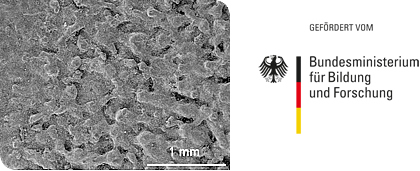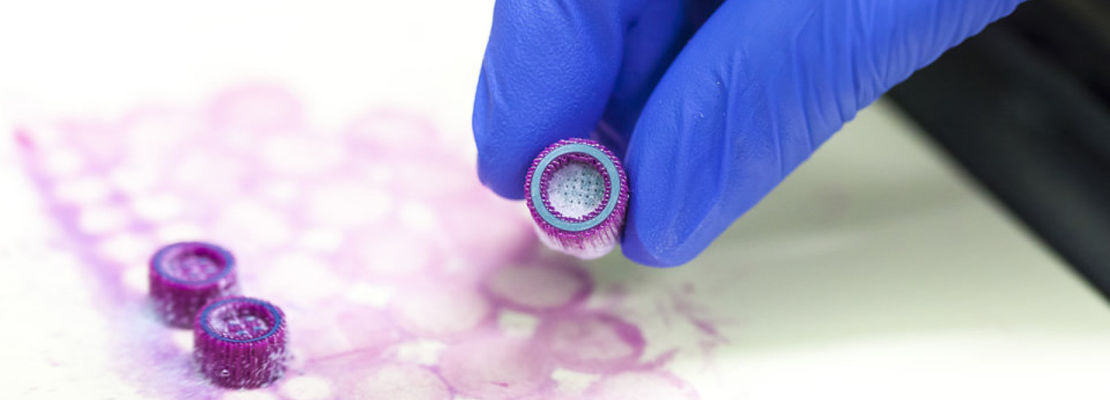Active Bone
Biodegradable composite materials for the generative manufacturing of bioactive bone substitute implants
Degradable biomaterials exhibit the ability to be successively degraded by the body, while new bone tissue is formed simultaneously. Ideally, the rate of degradation is adapted to the bone growth such that the growing bone complements for the degraded implant. Synthetic calcium phosphates are especially suitable for bone replacement.
The aim of the project supported by the BMBF (Federal Ministry of Education and Research) is the research and development of an innovative composite material of calcium phosphates, calcium carbonates and degradable polymers for the production of degradable bioactive implants for bone replacement with high mechanical strength. A complete process chain, from implant design, material synthesis and processing to manufacturing and distribution of the implants, has to be realized. To achieve these aims industrial companies and academic partners are involved in the project. The implants are generated and structured using Selective Laser Melting (SLM), an additive manufacturing technique. The advantage of this method is that the polymeric material component can be melted at a relatively low temperature, and thus, the mineral particles remain thermally stable. Furthermore, using a generative manufacturing technique constructs with a pore-structure that promotes tissue ingrowth and nutrient supply throughout the complete implant, can be generated. In addition, generative customized implants can be manufactured rapidly and economically without loss of material. This is especially important, when implants for large bone defects in the facial and cranial area are generated. The manufactured implant structure is additionally functionalized using growth stimulating proteins to improve resorption of the implant and new bone formation. Thereby the bone tissue is actively stimulated to promote new bone formation and to replace the scaffold.
In this project, the team of ZWBF is responsible in the cooperative project for the synthesis and the characterization of the composite material. In addition, the manufactured scaffolds are functionalized with specific proteins. The bone replacement structures are analyzed with respect to the short- and long-term behavior, too. Furthermore, the biocompatibility and the degradation kinetics of the applied composite material are investigated in an in vitro model.








